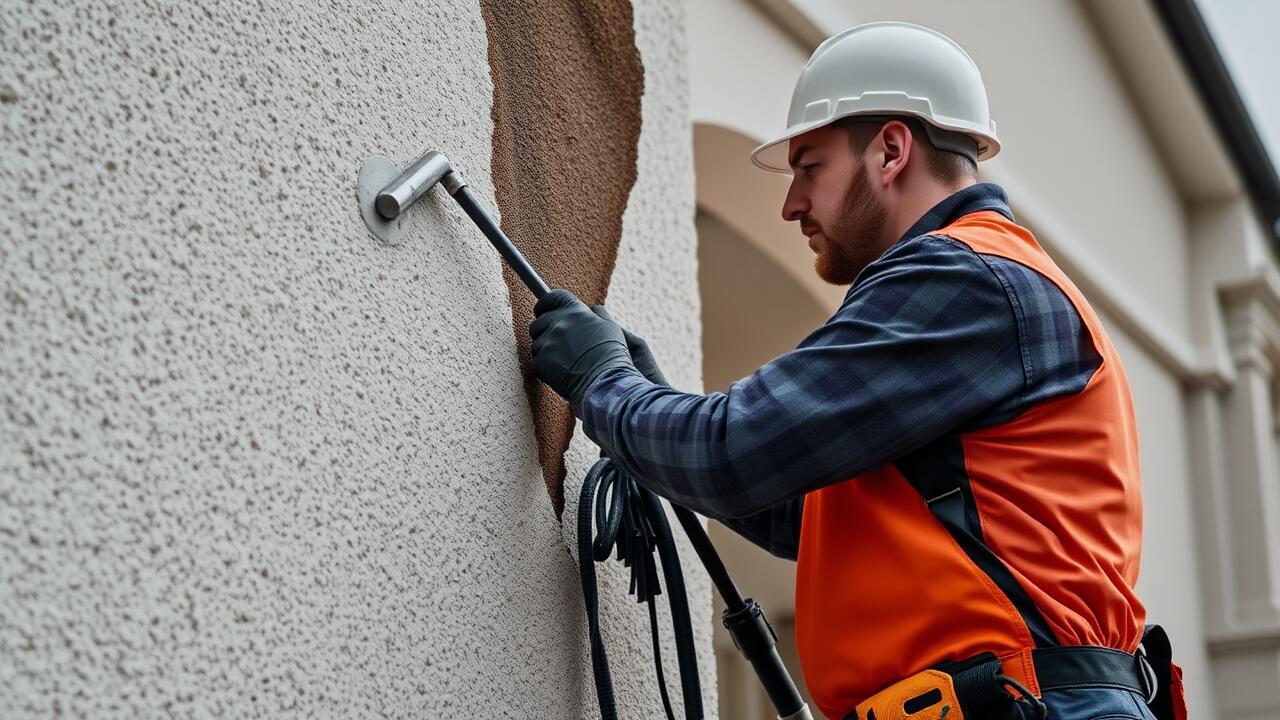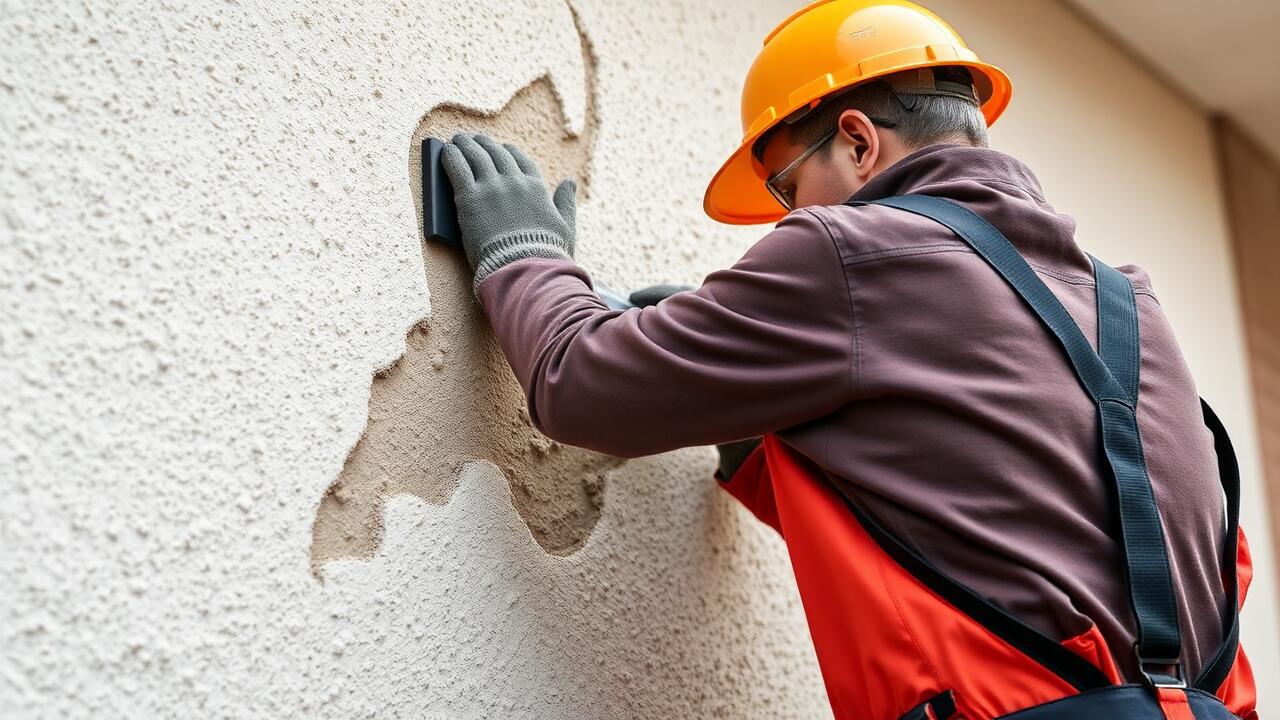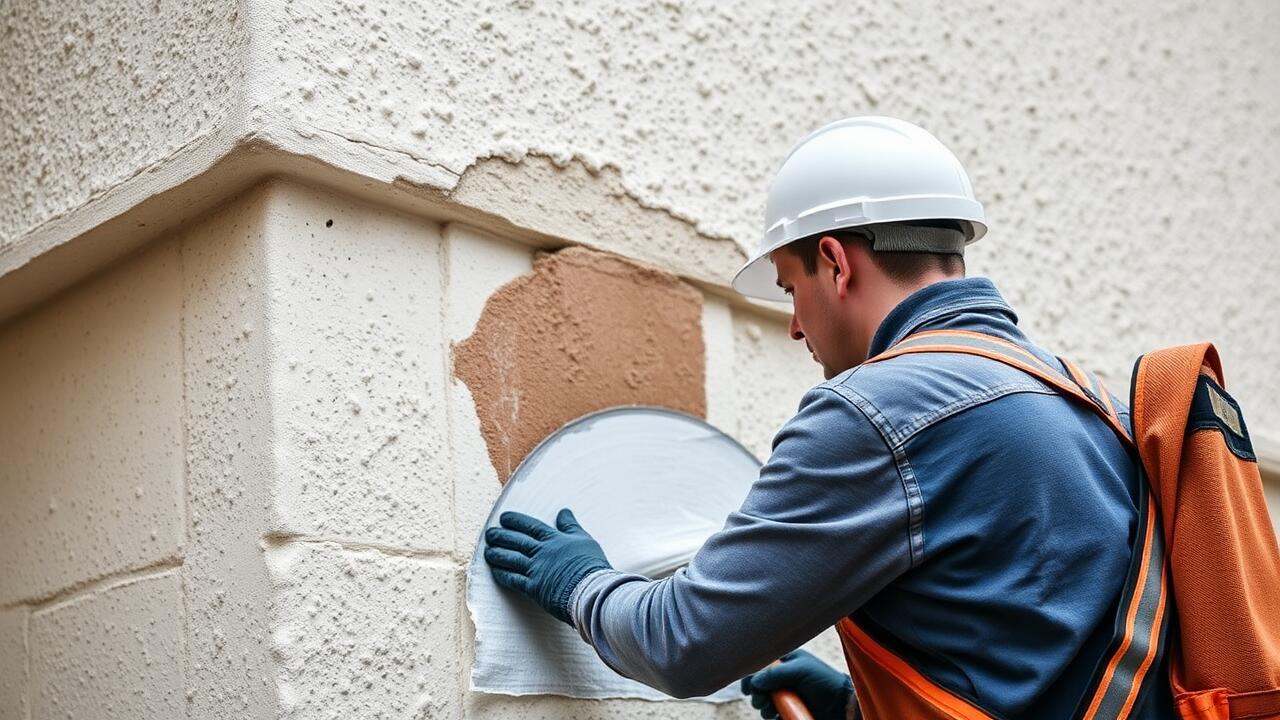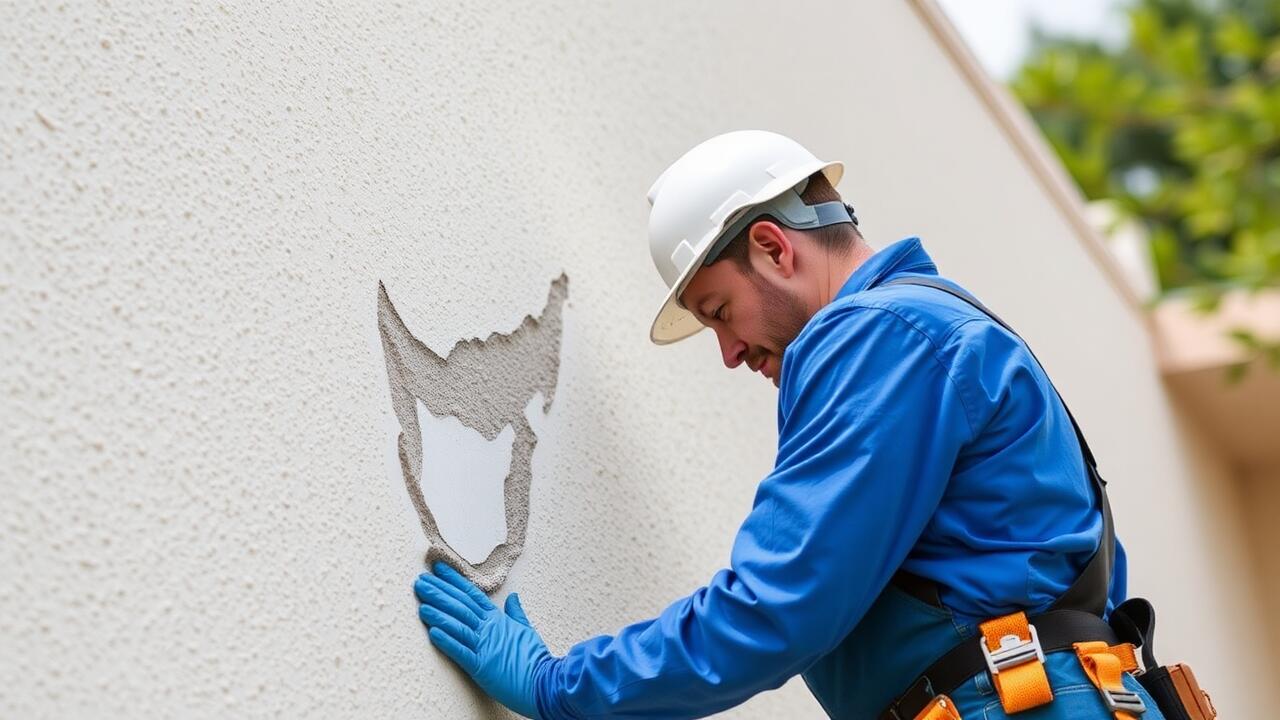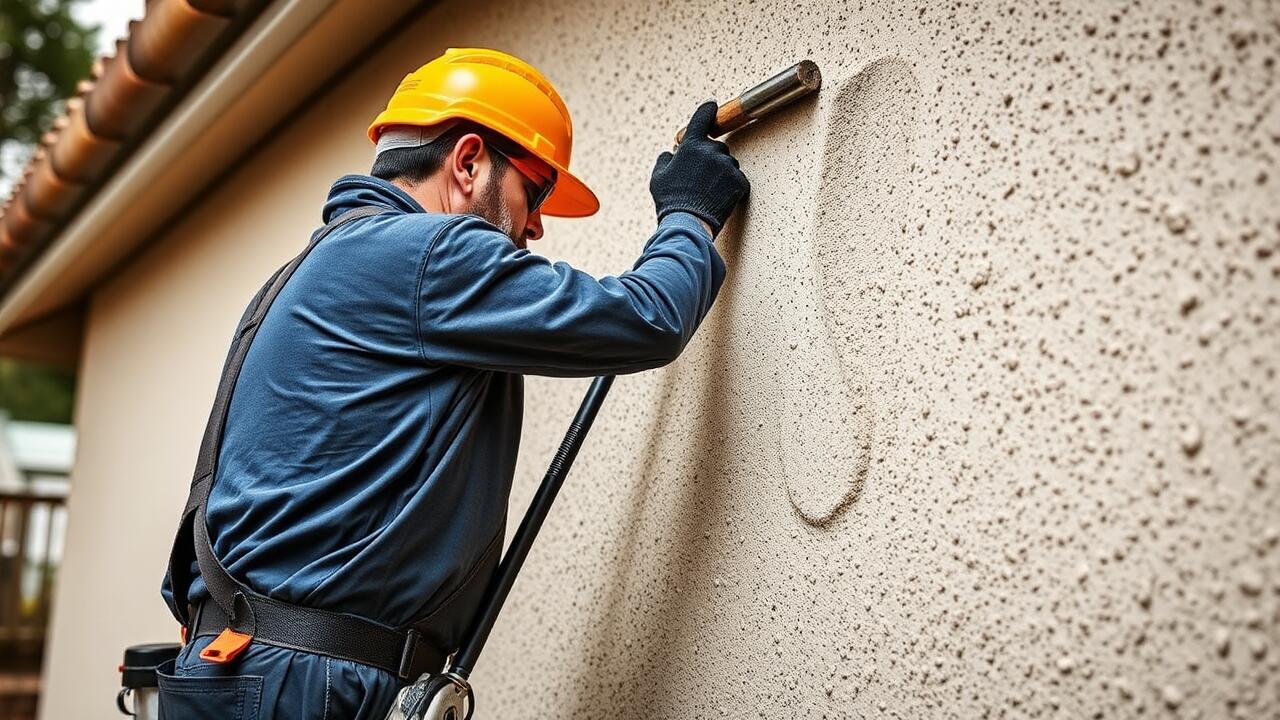
Moisture Accumulation
Moisture accumulation is a critical concern for stucco surfaces. When water penetrates the stucco, it can lead to various complications, including weakening the structure. Signs of moisture issues often manifest as discoloration or dark stains on the surface. Homeowners should remain vigilant, as prolonged exposure to water can result in more severe damage over time.
Addressing moisture issues promptly is essential to prevent costly repairs. In areas like Tarzana, Los Angeles, many professionals specialize in stucco repair services tailored to combat moisture-related deterioration. Regular inspections and maintenance can help identify early signs of water damage, allowing for timely interventions and ensuring the longevity of the stucco exterior.
Recognizing Signs of Water Damage
Water damage can often manifest in various ways on stucco surfaces, making it essential to stay vigilant. Homeowners should look for discoloration or staining, which may indicate moisture infiltration. These stains can vary in color from yellowish-brown to dark spots. Consistent exposure to water can also lead to a bubbling or peeling appearance that signals concerns beneath the surface.
Another noticeable sign of water damage is the presence of efflorescence, a white, chalky residue that forms when water seeps through the stucco and evaporates, leaving mineral deposits behind. Any cracks or fissures in the stucco may become more pronounced as moisture deteriorates the material. When these signs appear, prompt action is necessary to consider professional services such as Stucco Repair Tarzana, Los Angeles, to prevent further damage and maintain the integrity of the home.
Fungal Growth
Fungal growth presents a significant concern for homes with stucco exteriors. The presence of mold and mildew can indicate ongoing moisture issues. These fungi thrive in damp and humid environments, making it crucial to address any water damage promptly. Homeowners might notice discoloration, black spots, or fuzzy patches on the stucco surface, which can compromise the material's integrity over time.
Identifying these problems early can save homeowners from extensive repairs and health risks associated with mold exposure. Regular inspections and maintenance are vital in preventing fungal growth. If you suspect mold on your stucco, seeking professional assistance is advisable. Local services like Stucco Repair Tarzana, Los Angeles, can provide effective solutions to eliminate fungal invaders and restore the exterior’s appearance.
Identifying Mold and Mildew on Stucco
Mold and mildew can be significant indicators of moisture issues within stucco surfaces. Homeowners should look for dark patches, often green or black in color, which can appear as spots or streaks on the exterior. These growths thrive in damp environments, typically forming in areas with poor drainage or inadequate sealing. Regular inspections can help to spot these signs early, preventing further damage to the structure.
In Tarzana, Los Angeles, extreme weather conditions can exacerbate the moisture trapped within stucco. It's crucial to address these growths promptly to avoid more extensive repairs down the line. If mold or mildew is identified, professional assistance is recommended to ensure proper treatment. Experts in stucco repair not only remedy the visible issues but also address the underlying causes of moisture accumulation in the first place.
Soft Spots or Deterioration
Soft spots in stucco can indicate underlying issues that may require immediate attention. These areas may feel spongy or give way when pressed, suggesting that moisture has infiltrated the material. This moisture accumulation can compromise the integrity of the stucco, leading to more severe damage if left unaddressed. Homeowners should conduct regular inspections to catch these problems early, as timely identification often simplifies future repairs.
Deterioration can manifest in various forms, including cracks or peeling, which may also signal deeper issues. If soft spots are detected, it's essential to consult experts in stucco repair. Professionals specializing in stucco repair Tarzana, Los Angeles, can evaluate the damage and recommend appropriate repair techniques. Addressing soft spots promptly not only preserves the aesthetic appeal of the home but also prevents more costly repairs down the road.
Assessing Damage Before Repair
When assessing damage on stucco surfaces, visual inspection plays a crucial role. Homeowners should start by examining the exterior for signs of fractures, cracks, or holes that may indicate deeper issues. Pay special attention to areas around windows, door frames, and where different materials meet. These points are often vulnerable to moisture penetration, which can lead to more extensive damage if left unaddressed. Taking note of any discoloration or peeling paint can also provide insights into the condition of the stucco.
Determining the extent of deterioration is vital before initiating repairs. If soft spots are present, pressing against them can reveal whether the underlying structure has sustained damage. It may be beneficial to consider professional guidance, as specialists can conduct thorough assessments. For residents seeking help, services like Stucco Repair Tarzana, Los Angeles, can offer expertise in identifying and remedying issues effectively. This proactive approach can save time and resources in the long run.
FAQS
What are the common signs of stucco deterioration?
Common signs of stucco deterioration include moisture accumulation, visible water damage, fungal growth like mold and mildew, soft spots or areas that feel spongy, and cracks or holes in the stucco surface.
How can I recognize signs of water damage on my stucco?
Look for discoloration, peeling paint, or stains on the stucco surface. Additionally, check for any bubbling or blistering, which may indicate trapped moisture underneath.
What should I do if I find mold or mildew on my stucco?
If you find mold or mildew, it's important to clean the affected area with a mixture of water and mild detergent. However, if the growth is extensive, you may need to consult a professional for proper remediation.
How can I assess soft spots or deterioration in my stucco?
Gently press on the suspect areas with your fingers. If you feel softness or if the stucco gives way easily, it may indicate underlying damage that needs further investigation or repair.
Is stucco repair something I can do myself?
Minor repairs, such as filling cracks or applying patching compounds, can often be done by homeowners. However, for more extensive damage or if you're unsure, it's best to hire a professional to ensure proper repair and prevent further issues.
